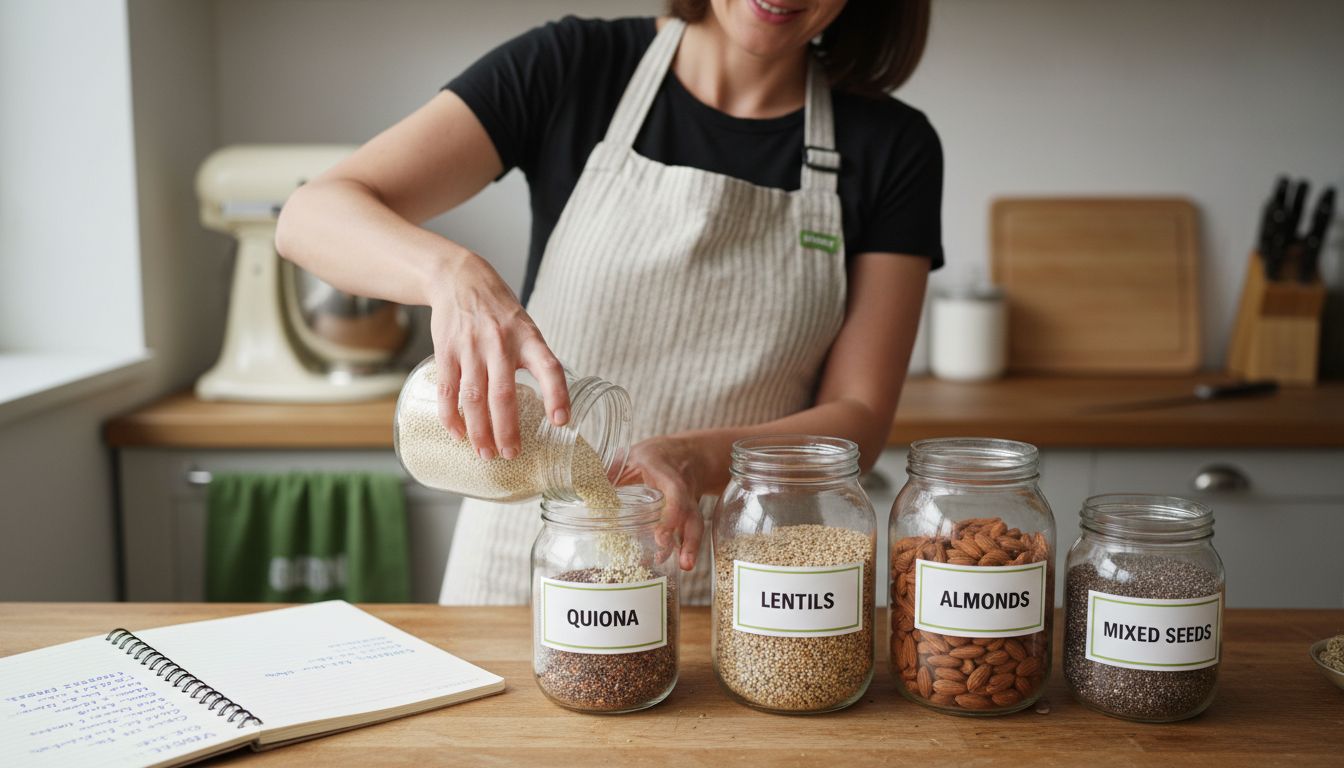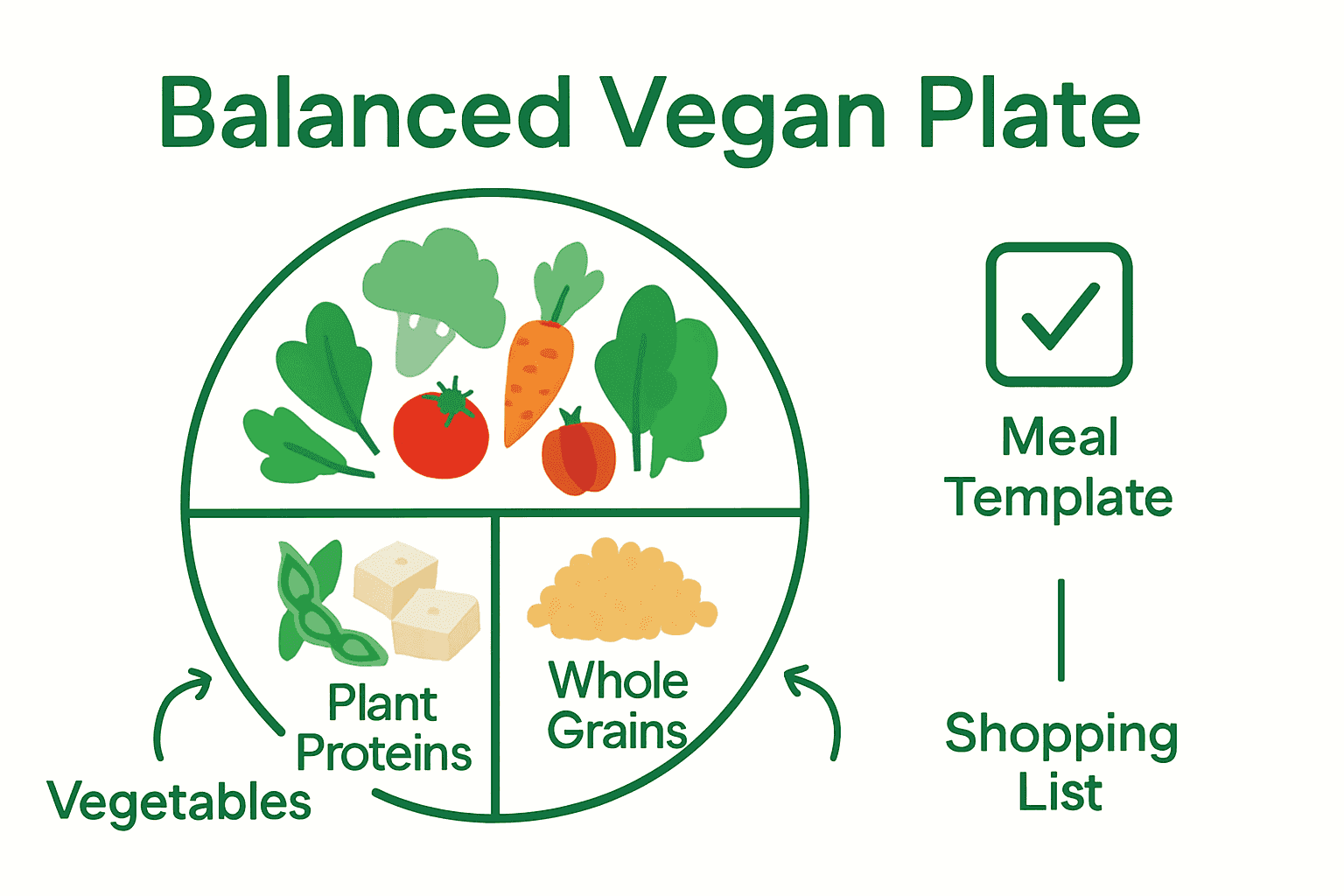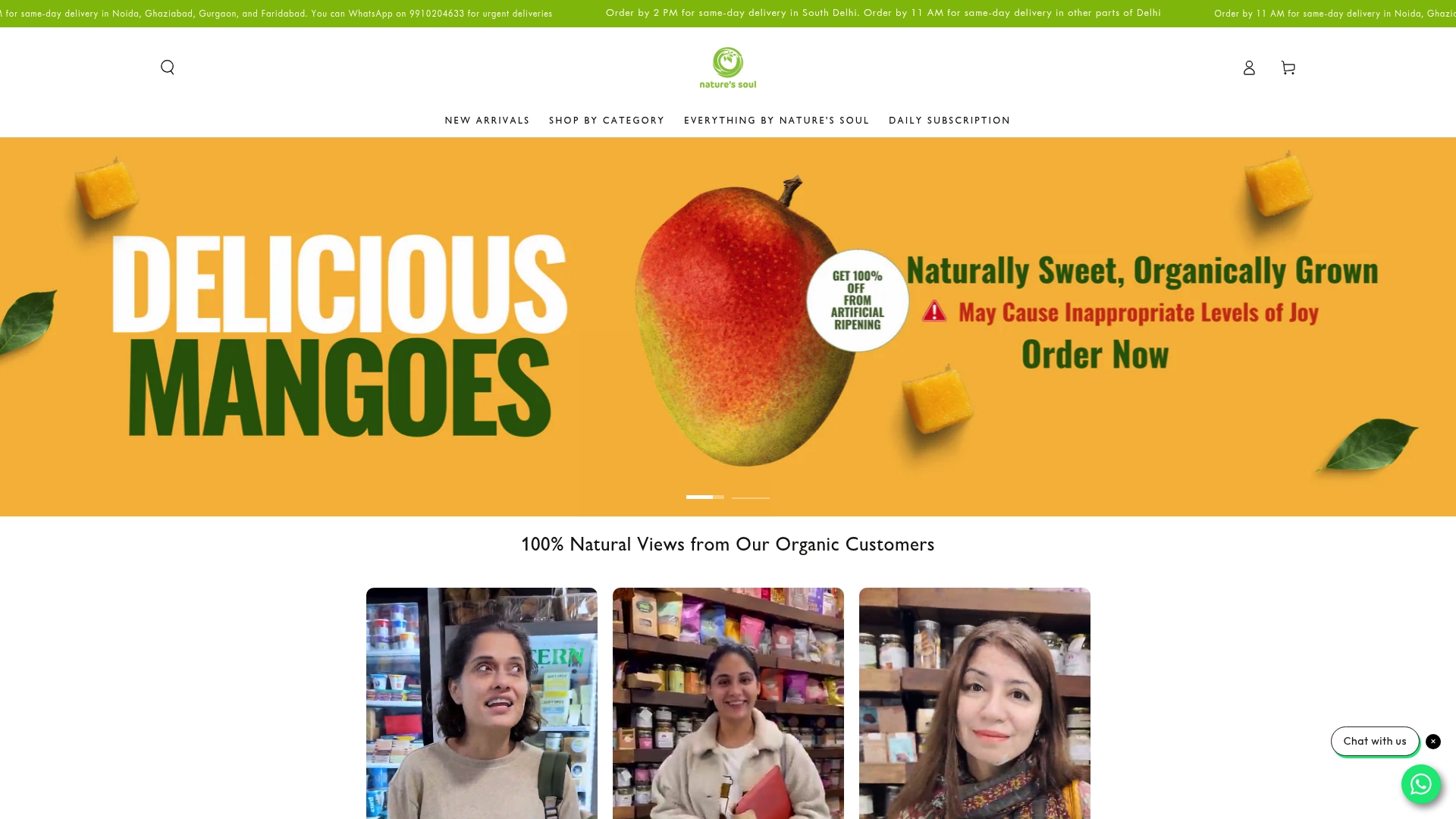More than one third of people who try vegan cooking give up within the first month. Choosing the right pantry staples and planning meals can be a challenge without clear steps to follow. With practical tips on ingredient selection, meal balance, and smart kitchen setup, you can build a plant-based routine that is healthy, simple, and rewarding from the start.
Table of Contents
- Step 1: Select Essential Vegan Ingredients
- Step 2: Plan Balanced Vegan Meals
- Step 3: Prep Your Vegan Kitchen Tools
- Step 4: Cook Simple Vegan Recipes
- Step 5: Verify Nutritional Quality And Taste
Quick Summary
| Key Point | Explanation |
|---|---|
| 1. Stock up on key vegan ingredients | Focus on whole grains, legumes, nuts, seeds, and condiments to create a versatile vegan pantry. |
| 2. Plan varied and balanced meals | Ensure plates include half vegetables, a quarter plant protein, and a quarter whole grains for nutritional balance. |
| 3. Equip your kitchen with essentials | Invest in quality tools like blenders, cutting boards, and pans to facilitate vegan cooking. |
| 4. Start with simple recipes | Choose easy dishes like pancakes or burrito bowls to build cooking confidence and explore flavors. |
| 5. Monitor nutritional quality and taste | Track micronutrient intake and adapt recipes with herbs and spices for enjoyable, nutritious meals. |
Step 1: Select Essential Vegan Ingredients
Creating a well-stocked vegan kitchen starts with selecting the right foundational ingredients that provide nutrition and versatility. According to PETA, building your pantry with essential plant based staples will make transitioning to vegan cooking smooth and enjoyable.
Key ingredients to focus on include whole grains like quinoa, brown rice, and oats which serve as excellent protein and energy sources. Legumes such as lentils, chickpeas, and black beans offer substantial protein and can replace meat in multiple recipes. Nuts and seeds like almonds, chia seeds, and hemp seeds provide healthy fats and additional protein. Stock up on nutritional yeast for a cheesy flavour, plant milks like soy or almond milk, and versatile condiments such as tamari and maple syrup.
When shopping, read labels carefully to ensure products are completely plant based. Start with small quantities of new ingredients to experiment without overwhelming your budget. A well planned vegan pantry means you are always ready to create delicious meals with confidence.
 Understanding Common Vegan Deficiencies in Plant-Based Diets can help you ensure you are getting balanced nutrition in your diet.
Understanding Common Vegan Deficiencies in Plant-Based Diets can help you ensure you are getting balanced nutrition in your diet.
Step 2: Plan Balanced Vegan Meals
Creating a balanced vegan meal plan requires thoughtful consideration of nutrition and variety. According to VeganEasy, Dr. Amanda Benham recommends focusing on incorporating green and colorful vegetables, diverse plant proteins, and complex carbohydrates to ensure your meals are both nutritious and satisfying.
Start by designing meals that include a variety of food groups. Your plate should contain approximately half vegetables, one quarter plant protein like legumes or tofu, and one quarter whole grains. ProVeg suggests building meals around affordable whole foods such as beans, whole grains, nuts, and seeds to keep costs manageable. Consider creating a weekly meal template with rotating proteins and seasonal vegetables to maintain interest and nutritional diversity. How to Meal Prep Vegan: Enjoy Healthy Plant-Based Meals can provide additional strategies for efficient meal planning.
Pro tip: Prepare a weekly grocery list based on your meal plan to reduce food waste and ensure you have all necessary ingredients.
This approach helps maintain a balanced diet while making vegan cooking more accessible and enjoyable.

Step 3: Prep Your Vegan Kitchen Tools
Equipping your kitchen with the right tools is crucial for successful vegan cooking. According to PETA, having specialized kitchen equipment can transform your plant-based meal preparation experience. Essential tools include a high-speed blender for smoothies and sauces, a food processor for chopping and mixing, and a set of sharp knives for precise ingredient preparation.
Vegan Action recommends investing in quality measuring cups, multiple mixing bowls, sturdy baking sheets, and a good set of cutting boards to create versatile cooking spaces. Consider having separate cutting boards for fruits and vegetables to prevent cross-contamination. Non-stick pans, silicone spatulas, and a reliable set of storage containers will also make your vegan cooking journey smoother. Understanding Gluten Free Cooking Utensils: A Clear Guide can provide additional insights into selecting kitchen tools that support your dietary needs.
Pro tip: Invest in quality tools gradually. Start with basic equipment and expand your collection as you become more comfortable with vegan cooking techniques. This approach helps manage costs while building your culinary confidence.
Step 4: Cook Simple Vegan Recipes
Starting your vegan cooking journey begins with mastering a few straightforward and delicious recipes that build confidence in the kitchen. According to PETA, beginners can easily transition into vegan cooking by preparing accessible dishes like avocado toast, tofu ricotta spinach lasagna, and black bean veggie burgers.
Focus on creating meals with minimal ingredients and simple preparation techniques. Start with one-pan recipes or dishes that require basic chopping and mixing skills. PETA suggests trying easy recipes such as plant-based pancakes, burrito bowls, and butternut squash enchiladas that introduce you to diverse flavours and cooking methods. 7 Easy Vegan Dinner Recipes for Healthy Living can provide additional inspiration for your culinary adventures.
Pro tip: Read the entire recipe before starting and prepare all ingredients beforehand. This mise en place approach will make cooking feel less overwhelming and more enjoyable, helping you build skills and confidence in vegan cooking.
Step 5: Verify Nutritional Quality and Taste
Ensuring your vegan meals are both nutritionally balanced and delicious requires careful attention and strategic planning. According to Oldways, understanding protein requirements is crucial for maintaining a healthy vegan diet, with daily intake recommendations that support overall wellness and energy levels.
VeganEasy highlights key nutritional considerations that go beyond protein. Dr. Amanda Benham recommends focusing on specific micronutrients like vitamin B12, vitamin D, iodine, and omega-3 fatty acids to prevent potential deficiencies. Taste verification involves experimenting with herbs, spices, and varied cooking techniques to create meals that are both nutritionally complete and genuinely enjoyable. Understanding What Are Clean Ingredients and Their Benefits can provide additional insights into selecting high-quality ingredients.
Pro tip: Keep a food journal to track your nutritional intake and personal taste preferences. This approach helps you fine-tune your meals, ensuring you meet your dietary needs while discovering flavours that genuinely excite your palate.
Transform Your Vegan Cooking Journey with Pure and Natural Ingredients
Starting vegan cooking can feel overwhelming when you worry about balancing nutrition, flavour, and finding reliable, clean ingredients. The challenge of selecting the right plant-based staples and preparing satisfying meals without compromising on health is real. By focusing on essential pantry ingredients, meal planning, and verifying nutritional quality as the guide suggests, you set yourself up for success.
At Nature’s Soul Shop, we understand how important it is to have easy access to organic and natural products that support your wellness goals. Whether you need wholesome dry groceries or clean vegan options made with the finest ingredients, we are here to help you cook confidently and enjoy vibrant meals every day.

Explore our wide range of organic, vegan, and gluten free products at Nature’s Soul Shop and take the guesswork out of your kitchen prep. Start building your perfect vegan pantry today and elevate your cooking experience using ingredients you can trust. Act now and create meals that nourish your body and delight your taste buds with every bite.
Frequently Asked Questions
What are essential ingredients for vegan cooking?
To start vegan cooking effectively, focus on stockpiling whole grains, legumes, nuts, seeds, plant milks, and nutritional yeast. Begin by selecting a few key items like quinoa and chickpeas, and gradually expand your pantry with other staples as you become more comfortable.
How can I plan balanced vegan meals?
To create balanced vegan meals, aim to fill half your plate with vegetables, a quarter with plant protein, and the remaining quarter with whole grains. Try developing a weekly meal template that includes a rotation of proteins and seasonal vegetables to keep meals interesting and nutritionally diverse.
What kitchen tools do I need for beginner vegan cooking?
Start with basic kitchen tools such as a high-speed blender, food processor, sharp knives, and measuring cups. Gradually invest in additional tools like mixing bowls and non-stick pans as you progress in your cooking skills, ensuring you have what you need for effective meal preparation.
What are some simple vegan recipes to start with?
Begin your vegan cooking journey with easy recipes that require minimal ingredients, such as avocado toast, black bean veggie burgers, and plant-based pancakes. Focus on mastering a few recipes first, and then explore more complex dishes as your confidence grows.
How can I ensure my vegan meals are nutritious and tasty?
To ensure your vegan meals are both nutritious and enjoyable, pay attention to incorporating a variety of food groups and experiment with herbs and spices for flavor. Keep a food journal to track your nutritional intake and preferences, allowing you to fine-tune recipes to suit your tastes and dietary requirements.
How should I manage food waste when cooking vegan?
To reduce food waste in your vegan cooking, create a weekly grocery list based on your planned meals and only purchase what you need. By carefully planning and using seasonal ingredients, you can minimize leftovers and ensure your meals stay fresh and budget-friendly.






